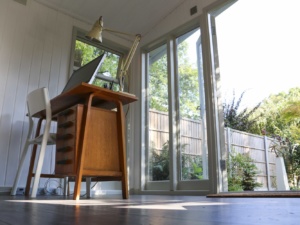Gardening in Miniature
The trend for pint-sized gardens is going nowhere. Here, we look into what defines a miniature garden and how you can create your own.
What is Gardening in Miniature?
This hobby is all about creating gardens in miniature with living dwarf trees, shrubs, bedding plants, mini water features, furniture and garden art. It can be as simple as a terrarium with a miniature bench and micro pebbles forming a path up to it, or as complex as a miniature garden scene that tells a story that transports you to another world.
Why is this Type of Gardening Catching On?
Creating gardens in miniature blends a love of gardening with a fascination for miniaturisation. It appeals to our inner child and is open to anyone whether you have access to a garden or not. There’s plenty of opportunity to dream and scheme with miniature gardens. The challenge is to master scale and create convincing horticultural illusions.
How to Create Your Own Miniature Garden
Decide Where Your Miniature Garden Will Live
If you’re starting out, choose a container as it’s less intimidating than inground outdoors. You could position it by your front door to welcome guests. Imagine their squeals of delight if you theme it by season or replicate your front garden in miniature. Or perhaps create a low pot miniature garden for a table centrepiece. Transform a window box into a miniature Italian garden or a fairy garden for a child’s bedside table. As you grow in confidence create a mini empire in a garden bed.
Develop an Eye for Detail
Miniature gardening can be enjoyed at many levels but if you want to make your tiny gardens truly captivating put some thought into the details.
Shrink to Scale
The same design principles apply as in large scale gardening i.e., anchor points, layers, balance, form, texture, colour, and focal point. Whatever accessories you choose make sure that the hardscaping and planting are relative to their size to make the most realistic miniature garden. It’s useful to know that dollhouse accessories come in three sizes – small, medium and large – so choose the most appropriate for your size of container.
Choose Your Anchor Point
The anchor point is usually the largest element in a garden. It could be a tree, a fountain or some hard landscaping that can’t be moved easily. The beauty of creating a tiny garden is you are starting from scratch, so you decide your anchor point. To maintain realism, use a miniature version of a full-sized anchor point e.g., a well-shaped dwarf spruce.
Think About Layers
Just as you would layer your beds in a full-sized garden add dimension, interest and contrast by using different heights of plants.
Achieve Balance
Take time to step back from your mini garden and look to see if it is balanced. On such a small scale your garden will be viewed in one eyeful so it’s important everything works in harmony and there is no one element that detracts or dominates.
Consider Form, Texture & Colour
In your choice of planting consider form, texture and colour to avoid your garden looking unplanned. For a striking design keep to one primary foliage colour throughout the scheme and add a pop of bold colour for interest.
Choose A Focal Point
The fun bit is choosing the element of your tiny garden that draws the eye. This is usually a decorative piece – an ornate bench, a fountain or a garden sculpture. Let your imagination go wild. This could be a keepsake from a trip, or something bought especially. The more interesting the focal point the more enchanting the scene.
Stand Back & Admire Your Handiwork
Unlike regularly gardening it takes minutes to re-jig your tiny plot. As the plants grow you might decide to adjust the scene, maybe even break the above rules and have fun.
The Best Miniature Gardens Tell a Story
- Make a place for pets in your vignette
- Woodland creatures hiding in the undergrowth add focus
- Lead the eye with a winding path
- Doorways add intrigue
- Fill mini planters with sedum cuttings that will eventually take root
Plants for Your Mini Garden
The world of miniature plants opens a whole new exciting world of gardening. When a plant is labelled ‘miniature’ it refers to its growing rate rather than its size. Miniature is defined as growing less than an inch a year.
Pay attention to foliage size so your mini garden remains in proportion. Another factor to be mindful of when choosing your plants is how easy they are to care for.
Popular plant choices for miniature gardens are ‘Cis’ dwarf Korean fir and dwarf spruces which look like miniature versions of full-sized trees. Be wary of using dwarf varieties as some will outgrow your mini gardens very quicky. Check the growth rate on the label before making your purchase or be prepared to plant on.
‘Elfin’ thyme will provide low maintenance ground cover. Alpine and rockery plants as well as mini succulents are all good choices for miniature gardens. Your garden centre should be able to advise you if you’re just starting out.
Ongoing Care
Once you’ve created your mini garden part of the pleasure is watching how the plants grow together. Expect to snip back to keep the planting in proportion. Feed and water as necessary. Just as you would with a full-size garden consider the light conditions and don’t mix indoor and outdoor varieties of plants.
Further Reading & Inspiration
Over lockdown Michael Perry aka Mr Plant Geek encouraged children and adults alike to create a tiny garden on a dinner plate. Find his step-by-step guide here.
The Chelsea Psychic Garden even ran the first miniature garden competition, you can see the winners on their website here.
Garden designer James Wong suggests planting your own mini forest or rugged mini scape in this Guardian article with plenty of advice of choosing miniature plants with big impact.




















